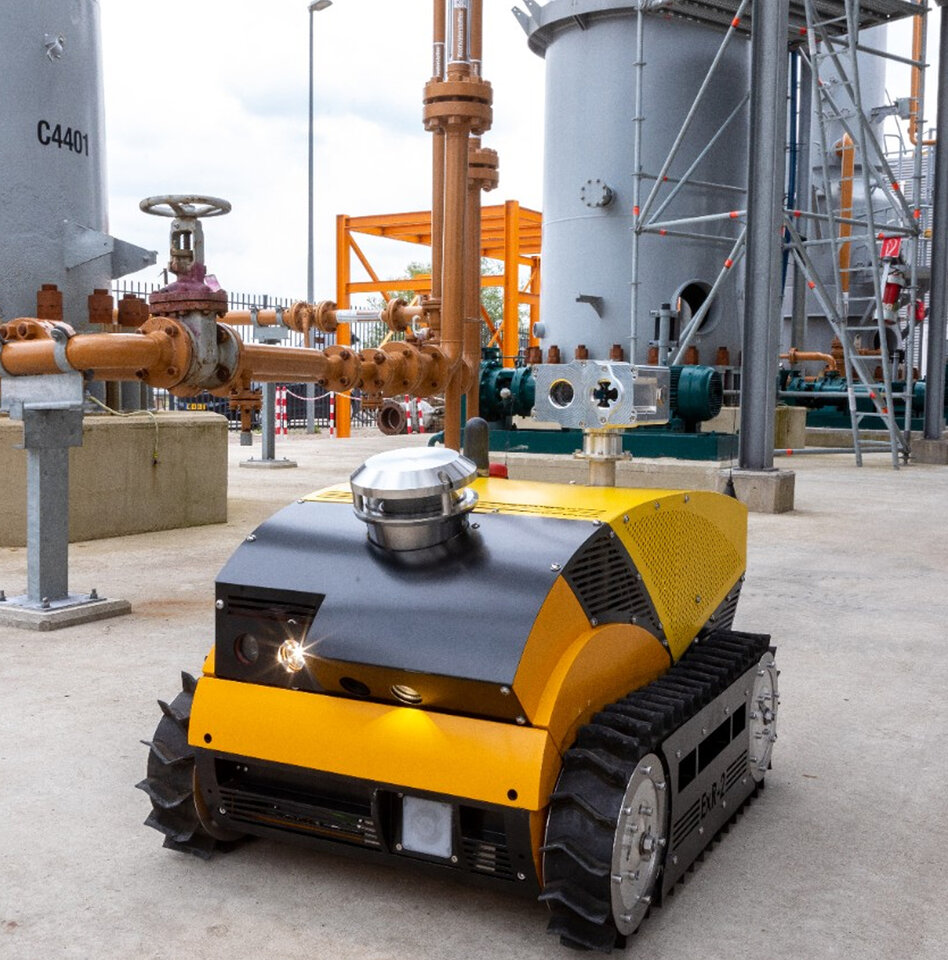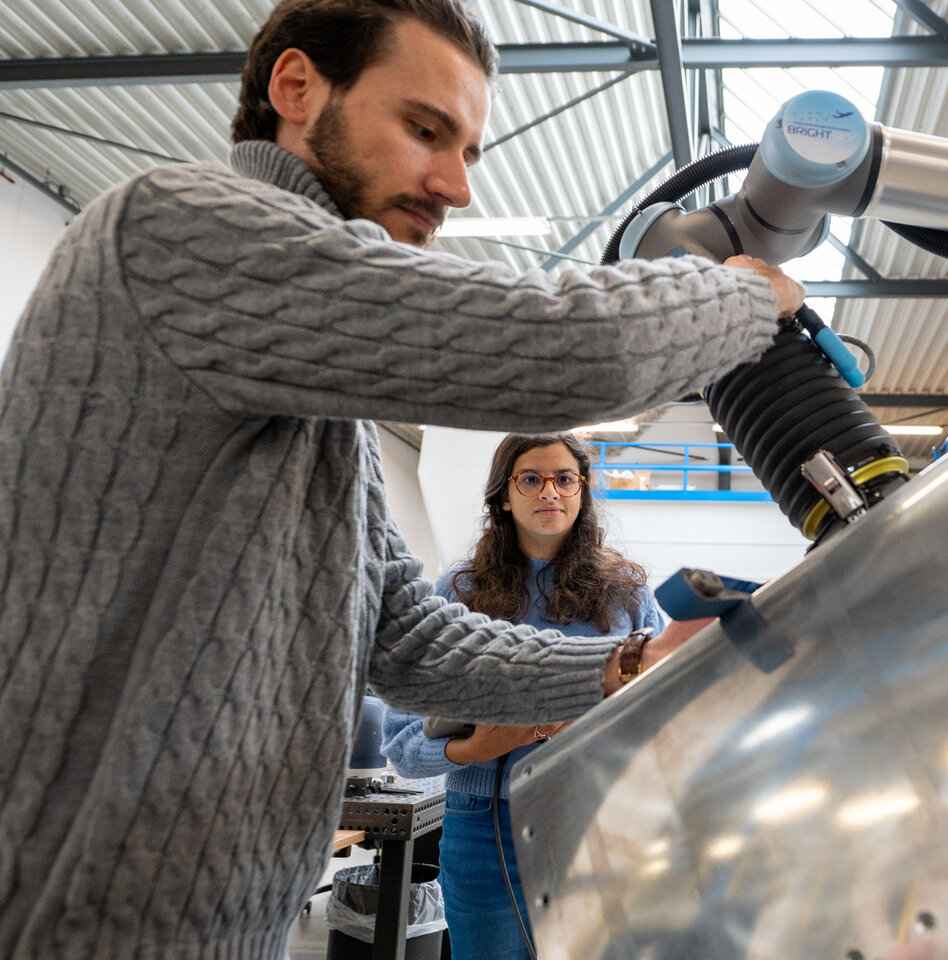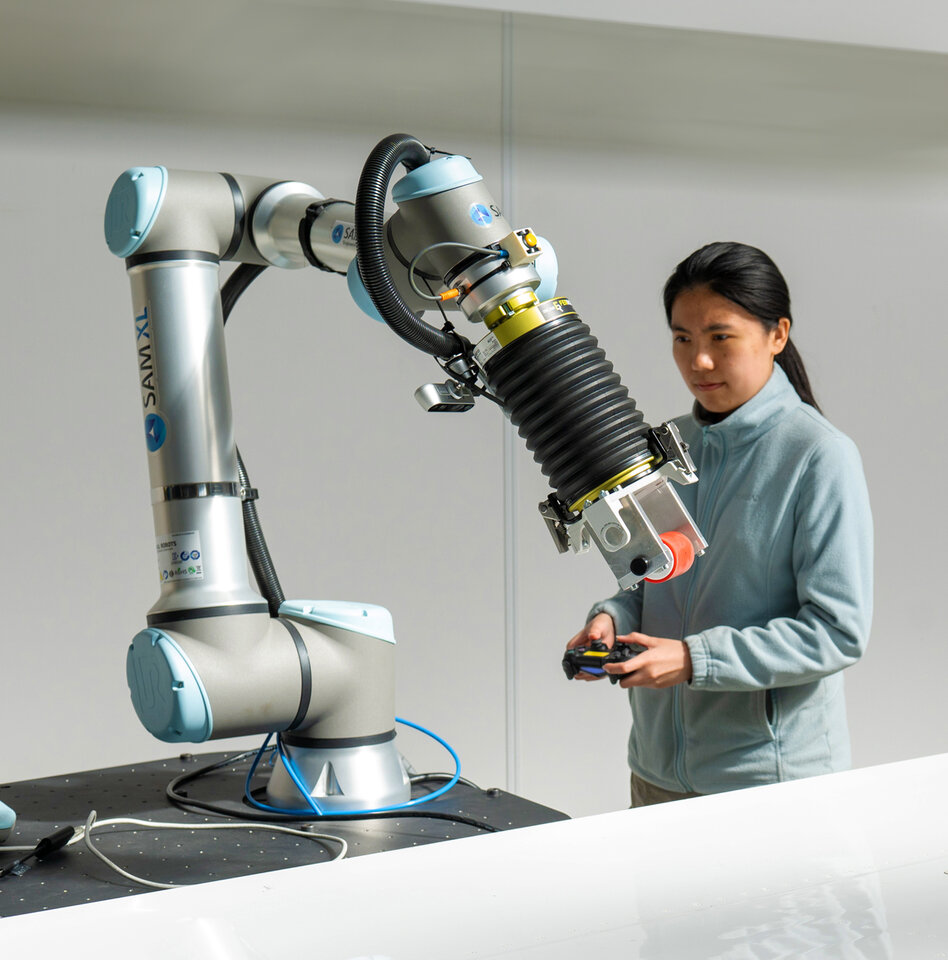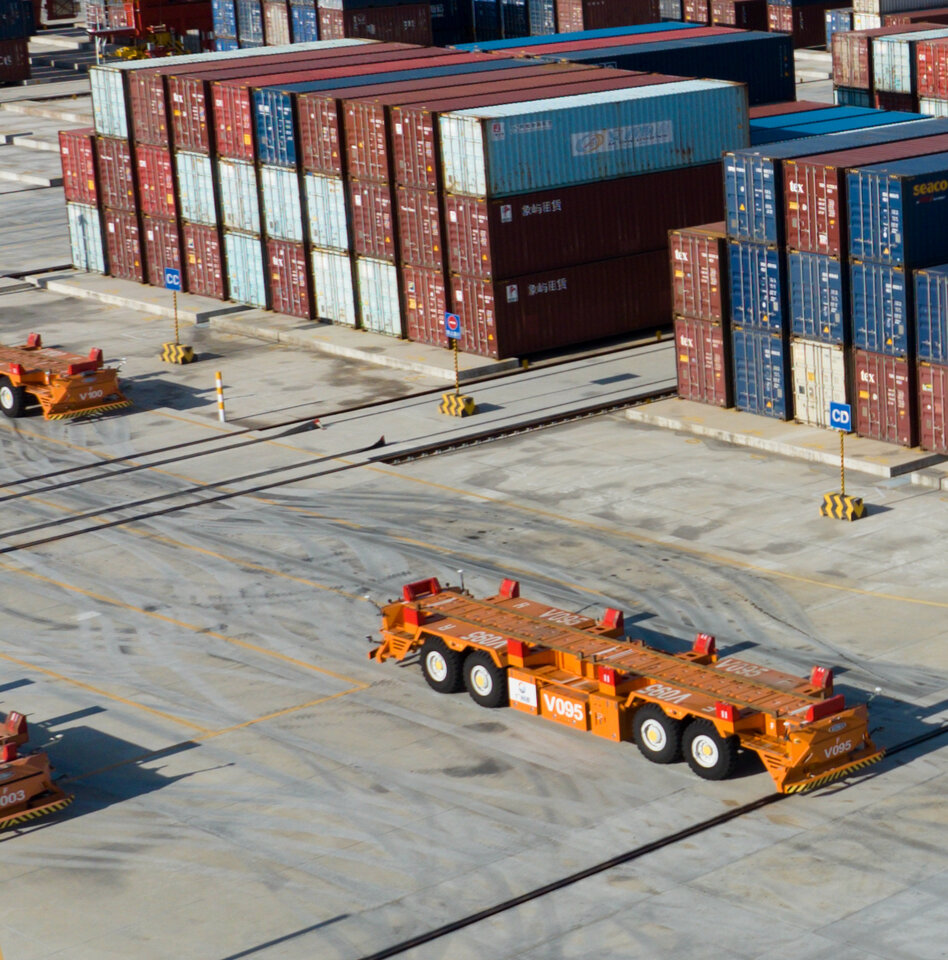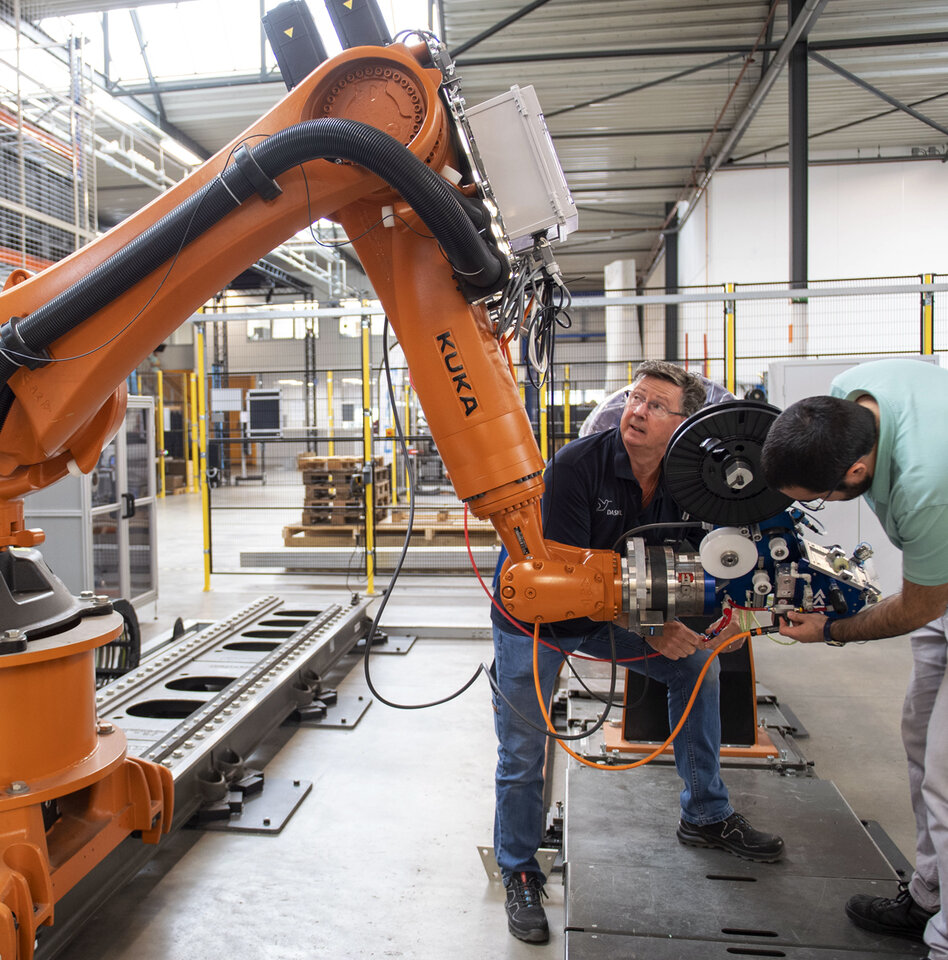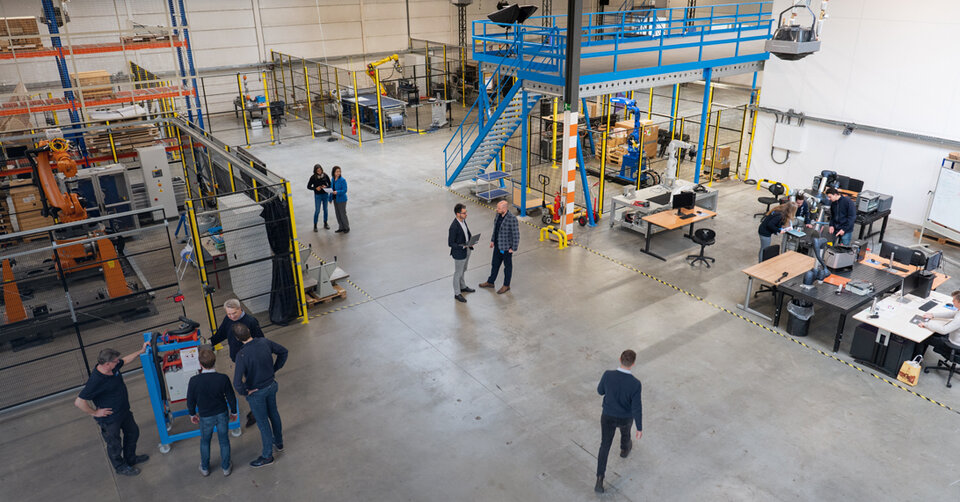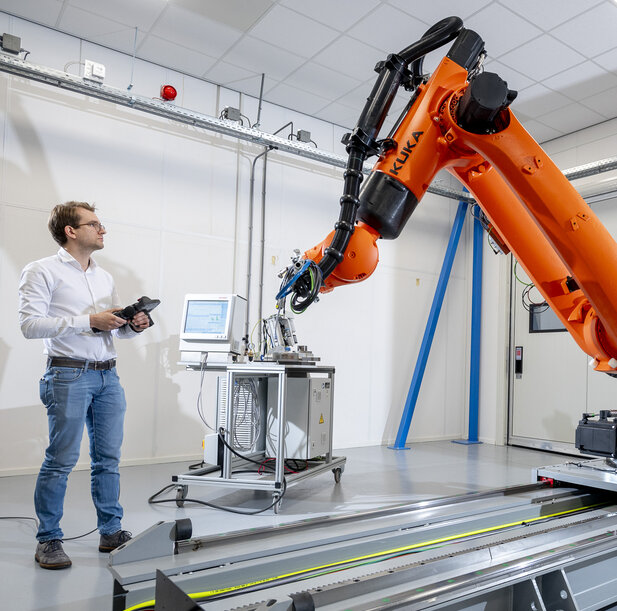
Want to discover how robotics can help solve complex challenges within your organization? Consider addressing structural staff shortages and absenteeism, as well as improving efficiency and streamlining physical work processes. By deploying robots for physically demanding tasks, companies can increase productivity and reduce costs. Especially in activities where a high degree of accuracy is required, where safety risks are high, and where sensor technology is becoming the new norm, the potential of robotics is enormous. Together we will work to implement robotics the right way and jointly build the future of work and a more digitally driven society.
-
Read more
Robots can help with repetitive tasks that are physically demanding for humans, such as lifting, carrying or repeated bending. Robots in the form of autonomous vehicles or drones can also be used in hard-to-reach or dangerous locations. For example, for safety scans and inspections. With these uses of robotics, organizations can improve worker safety and increase process efficiency, resulting in a healthier and safer work environment for everyone involved.
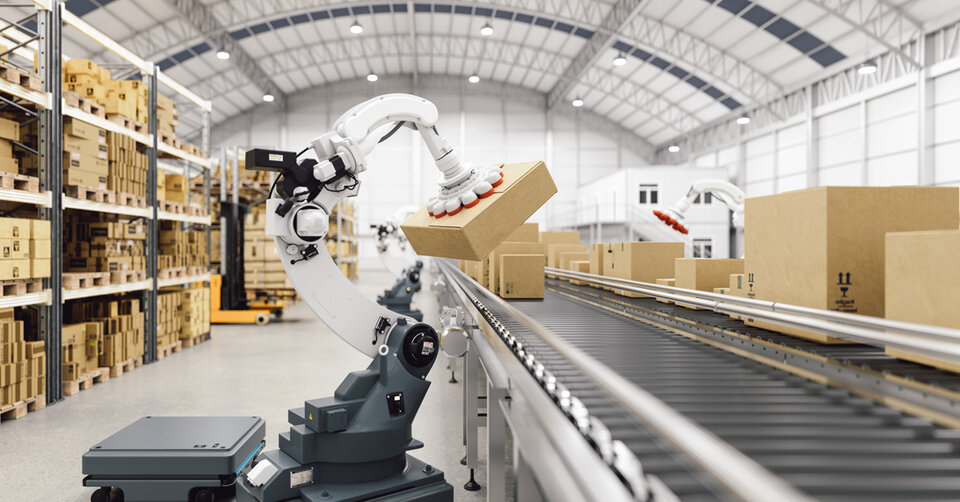
Improve productivity
Robotics has a significant impact on productivity and can help with staffing shortages within organizations.-
Read more
Robots can increase productivity and make existing work more attractive by supporting employees in repetitive and physically demanding tasks. This leads to a more efficient use of resources and improved output. This is especially relevant in industries where there is a shortage of skilled labor or where certain tasks are difficult to perform due to the nature of the work or the working conditions.
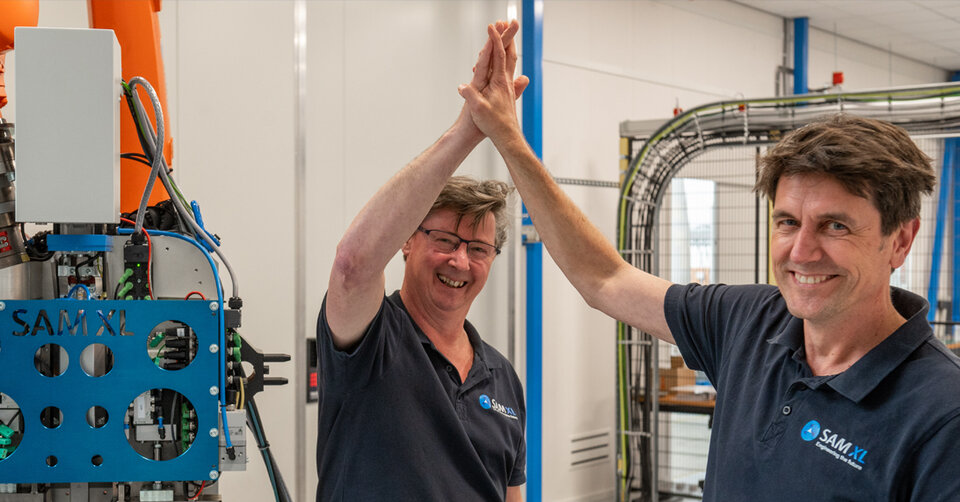
Successfully implementing robots
Implementing robots in the workplace is a process that comes with several challenges.-
Read more
Robots in the workplace are not an unqualified success. For example, the work may be too complex for robots, so it does not meet expectations. They are also vulnerable to changes or exceptions in a work process. Where things can also go wrong when implementing robots is that at the start of a robot's development, social, psychological or organizational aspects that come into play and determine whether a robot is successfully implemented in the workplace are not sufficiently considered. To overcome these challenges, it is essential to conduct a thorough assessment of the organization's needs and capabilities.

Future of work
The rise of robotics in the labor market promises a fascinating transformation for the future of work.-
Read more
Robotization may lead to a shift in the nature of work, with human workers focusing more on tasks that require creativity, problem-solving skills and human interaction. But what exactly will this look like? How will technology change work within your industry? What specifically can robots do for your business? And what impact will this have on both the work and the people performing it? Overall, the future of work with robotics will create opportunities for innovation, growth and efficiency, but at the same time present challenges that must be carefully addressed.


